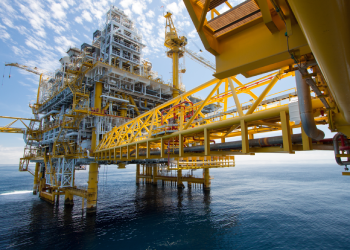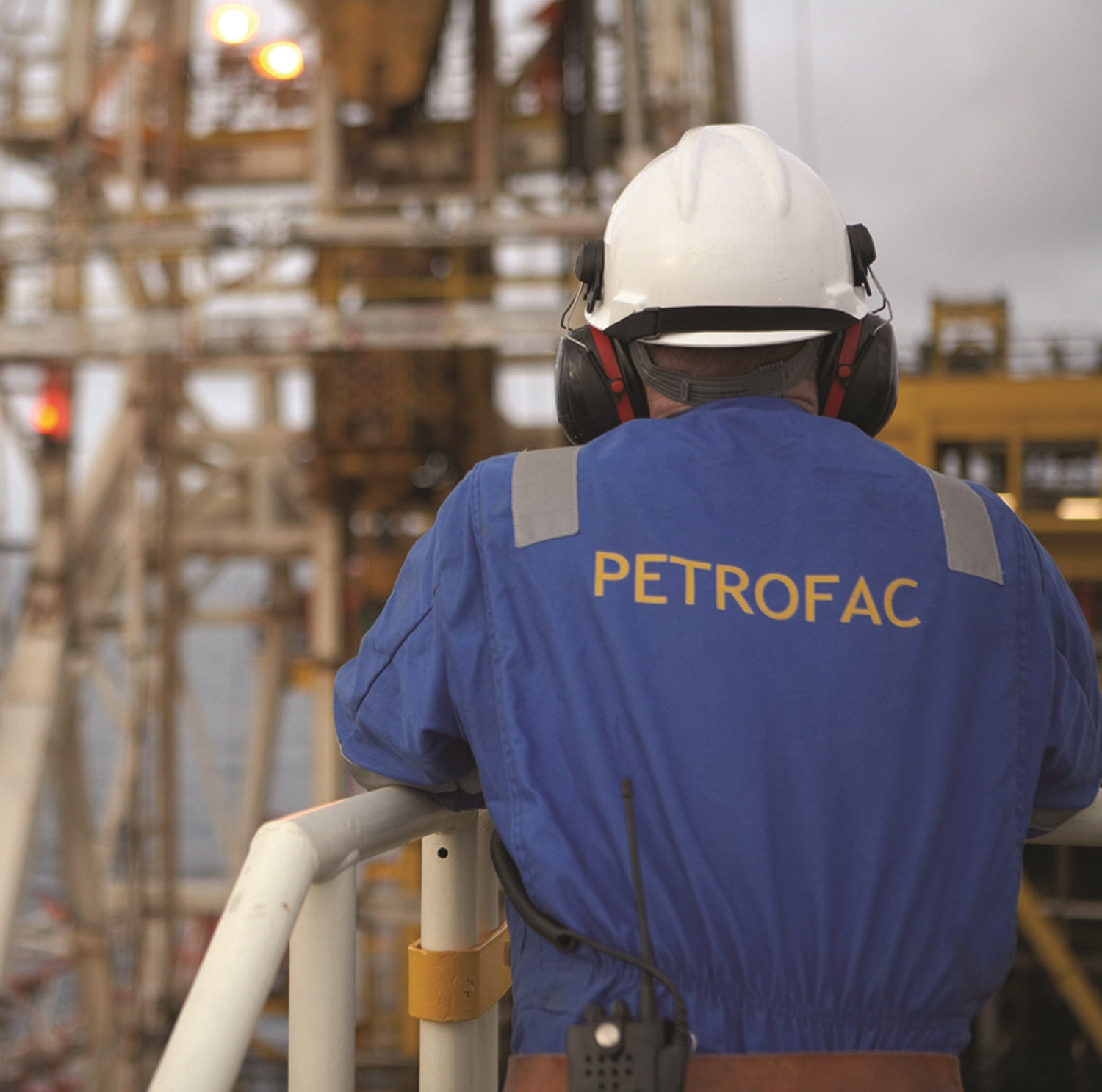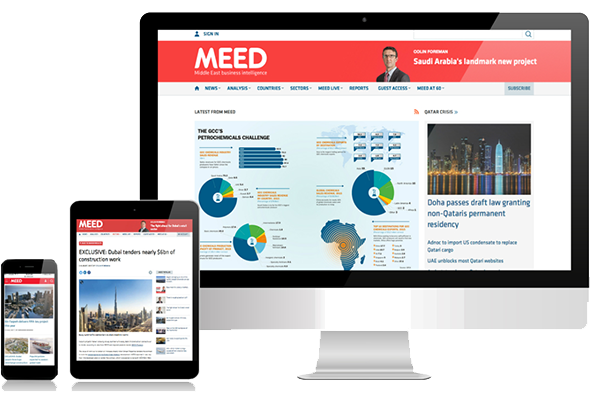Middle East invests in giant airports
25 July 2025
 This aviation package also includes:
This aviation package also includes:
> Broader region upgrades its airports
> Global air travel shifts east

The two largest airport construction projects in the world are in the GCC, according to UK data analytics firm GlobalData’s latest ranking of international airport projects.
Dubai’s Al-Maktoum International airport ranks first, followed by Riyadh’s King Salman International airport.
The scale and timing of the two projects underscores the region’s intention to remain a global travel hub.
Demand has rebounded strongly following the Covid-19 pandemic and data for 2024 shows that air traffic is nearing or exceeding pre-pandemic levels at many airports. These tailwinds have continued into 2025 and are expected to continue for many years to come.
Dubai pivots
 In Dubai, the expansion of Al-Maktoum International airport, which is also known as Dubai World Central, is back on the agenda after a five-year hiatus. The expansion project was launched in 2014 and was put on hold as the emirate focused on delivering infrastructure for Expo 2020 and then dealt with the economic impact of the Covid-19 pandemic.
In Dubai, the expansion of Al-Maktoum International airport, which is also known as Dubai World Central, is back on the agenda after a five-year hiatus. The expansion project was launched in 2014 and was put on hold as the emirate focused on delivering infrastructure for Expo 2020 and then dealt with the economic impact of the Covid-19 pandemic.
With a rebound in air travel and growing operational pressure at Dubai International airport (DXB), the project was relaunched in 2024.
Once complete, Al-Maktoum will cover an area of 70 square kilometres (sq km), which will make it five times larger than DXB. It will have five parallel runways, five terminal buildings and up to 400 aircraft gates. It is designed to eventually handle 260 million passengers and 12 million tonnes of cargo a year, making it the largest passenger airport in the world by capacity.
The government has said that operations will shift from DXB to Al-Maktoum within the next 10 years. The project is also driving housing and commercial development in the surrounding area, with plans to accommodate up to 1 million residents around the new airport zone.
Construction is already progressing. In May, Binladin Contracting Group won a AED1bn ($272m) contract for the second runway, and Abu Dhabi-based Tristar E&C is delivering enabling works for the terminal.
Dubai Aviation Engineering Projects (DAEP), the government entity managing the development, has also issued tenders for the first phase of construction, which is expected to be completed by 2032.
The initial phase includes five substructure packages covering tunnels, technical infrastructure and a seven-level West Terminal spanning 800,000 square metres. This terminal alone will have an annual capacity of 45 million passengers.
DAEP has also tendered a contract for the airport’s automated people mover system, which will operate beneath the apron and link 14 underground stations across the terminals and concourses. International firms including Alstom, Hitachi and CRRC are expected to bid.
Unlike in 2014, when Dubai had some time on its side, the need for expansion today is becoming increasingly urgent. While DXB remains the world’s busiest airport for international passengers and the second busiest overall with 92.3 million travellers in 2024, it operates with only two runways and is approaching its physical limits.
As Emirates begins flying smaller Airbus A350s with fewer seats than the A380s the company is replacing, the number of aircraft movements is expected to increase, further straining capacity. DXB already ranks among the world’s busiest airports for aircraft movements. Without additional runway infrastructure, future growth will be constrained.
Riyadh’s global ambitions
While Dubai expands to maintain its lead in aviation, Riyadh is seeking to establish itself as a global hub.
Backed by sovereign wealth vehicle the Public Investment Fund, the King Salman International airport project represents a central pillar of Saudi Arabia’s $100bn aviation and economic diversification strategy.
The airport will cover 57 sq km, integrating the existing King Khalid International airport and adding six parallel runways, several new terminals and a 12-square-kilometre mixed-use logistics and real estate zone.
By 2030, Riyadh aims for the airport to accommodate 120 million passengers annually, rising to 185 million by 2050. It will also target 3.5 million tonnes of cargo a year.
The airport will anchor the kingdom’s wider aviation strategy, which seeks to triple annual passenger traffic to 330 million, expand cargo throughput to 4.5 million tonnes and grow Saudi Arabia’s network to over 250 global destinations.
While Dubai expands to maintain its lead in aviation, Riyadh is seeking to establish itself as a global hub
The newly launched Riyadh Air will operate from the new hub, complementing Saudia and positioning the capital as a central node in global travel.
Contractors are already competing for major construction packages. The fourth runway package and a separate contract covering the Iconic Terminal and Terminal 6 for low-cost carriers are out to tender.
Several international firms have been appointed to design and delivery roles. Foster & Partners is leading the masterplan and terminal architecture, Jacobs is supporting runway and infrastructure design and Bechtel is delivering the terminal programme. Parsons has taken responsibility for airside and landside works and Mace is overseeing overall delivery management. Local firm Nera is handling the critical airspace design consultancy.
Both airports, along with other hubs and airport projects that are being developed in the region, will help the Gulf remain a key player in global aviation for decades to come.
Main photo: Artist’s impression of the phase two expansion of Dubai’s Al-Maktoum airport. Credit: Dubai Airports
Exclusive from Meed
-
 Aramco turns attention to strategic projects
Aramco turns attention to strategic projects12 September 2025
-
 GCCIA signs $500m deal for Oman power link
GCCIA signs $500m deal for Oman power link12 September 2025
-
 Qatar’s Ashghal awards $101m construction contracts
Qatar’s Ashghal awards $101m construction contracts12 September 2025
-
 Saudi Arabia seeks consultants for Riyadh rail link
Saudi Arabia seeks consultants for Riyadh rail link12 September 2025
-
 Petrofac agrees restructuring deal with Samsung and Saipem
Petrofac agrees restructuring deal with Samsung and Saipem12 September 2025
All of this is only 1% of what MEED.com has to offer
Subscribe now and unlock all the 153,671 articles on MEED.com
- All the latest news, data, and market intelligence across MENA at your fingerprints
- First-hand updates and inside information on projects, clients and competitors that matter to you
- 20 years' archive of information, data, and news for you to access at your convenience
- Strategize to succeed and minimise risks with timely analysis of current and future market trends

Related Articles
-
 Aramco turns attention to strategic projects
Aramco turns attention to strategic projects12 September 2025

In the second quarter of 2025, Saudi Aramco’s capital expenditure (capex) stood at $12.3bn, marking a marginal year-on-year increase of 1.46%. For the first half of the year, the company recorded capex of $24.85bn, up 9.5% compared to the same period last year.
The company had earlier issued capital investment guidance of $52bn to $58bn for 2025, excluding approximately $4bn in project financing.
Concerns grew in Saudi Arabia’s offshore oil and gas projects market earlier this year as engineering, procurement, construction and installation (EPCI) contract awards stalled.
Aramco spent a record $5bn on offshore EPCI contracts in 2024 and was expected to surpass that in 2025. However, it awarded no Contract Release Purchase Orders (CRPOs) in the first half of the year, fuelling apprehension among contractors and suppliers.
In July, Aramco dispelled speculation by awarding five tenders worth over $3bn. The CRPOs are numbers 150, 157, 158, 159 and 160, and involve EPCI work and infrastructure upgrades at the Abu Safah, Berri, Manifa, Marjan and Zuluf offshore oil fields.
Aramco also awarded four additional CRPOs as part of a large-scale infrastructure expansion at the Zuluf offshore field. These are CRPOs 145, 146, 147 and 148, with a combined estimated value of nearly $6bn.
With these contract awards, Aramco has nearly doubled its offshore capex this year compared to 2024, marking another year of robust upstream investment.
Looking ahead, Aramco is evaluating bids received for seven key tenders in July and August.
These tenders include CRPOs 154, 155 and 156, representing the next phase of infrastructure expansion at the Safaniya offshore oil field; CRPO 161, which covers the EPCI of four gas jackets at the Arabiyah, Hasbah and Karan fields; and CRPOs 162, 163 and 164, relating to the EPCI of key infrastructure at the Abu Safah, Berri, Karan, Marjan and Safaniya fields.
Onshore projects advance
In parallel with the Safaniya offshore expansion, Aramco is tendering a separate project to build onshore surface and processing facilities to handle additional volumes of oil and associated gas generated by the expanded offshore infrastructure.
The scope of the Safaniya onshore facilities project has been divided into two main EPC packages: the first covering water treatment and injection units, and the second focused on produced water utilities. Contractors have been given deadlines of 24 October and 7 November to submit technical and commercial bids.
Aramco is also understood to be close to awarding the main EPC contracts for the expansion of the Haradh gas-oil separation plant 3 (Gosp 3) in Saudi Arabia. Located within the Haradh hydrocarbons development in the Eastern Province, the project will increase output of the Arab Light crude grade from 300,000 barrels a day (b/d) to 420,000 b/d. It will also raise sour gas production to 32 million cubic feet a day (cf/d).
Ramping up gas production
In line with its goal of increasing gas production, Aramco is progressing its Jafurah unconventional gas programme. Situated in Saudi Arabia’s Eastern Province, the Jafurah Basin contains the largest liquid-rich shale gas play in the Middle East, with an estimated 200 trillion cubic feet of gas in place. The shale play spans approximately 17,000 square kilometres.
The Jafurah programme is a cornerstone of Aramco’s long-term gas strategy, with total lifecycle investment expected to exceed $100bn. In February 2020, Aramco received a capex allocation of $110bn from the Saudi government to support the long-term phased development of the unconventional gas resource base.
Aramco is estimated to have spent $25bn across the first three phases of Jafurah’s development. In November 2021, the company awarded $10bn in subsurface and EPC contracts for phase one of the programme.
On 30 June 2024, Aramco awarded 16 contracts worth approximately $12.4bn for phase two. The scope includes the construction of gas compression facilities, associated pipelines and the expansion of the Jafurah gas plant – covering gas processing trains, utilities, sulphur handling and export infrastructure.
In July 2024, a consortium of Spain’s Tecnicas Reunidas and China’s Sinopec was awarded a $2.24bn EPC contract by Aramco for phase three of the expansion.
Phase four of the Jafurah expansion is estimated at $2.5bn. The scope includes EPC works for three gas compression plants, each with a capacity of 200 million cf/d. Bids were submitted in mid-January, remain valid through September, and are under evaluation, with a contract award expected in Q4 2025.
Aramco is also tendering a major project to boost gas compression capacity at the Shedgum and Uthmaniya plants in the Eastern Province.
The facilities currently receive approximately 870 million cf/d and 1.2 billion cf/d of Khuff raw gas, respectively. The project aims to increase compression and processing capacity and to construct new pipelines to enhance gas transport.
Contractors are preparing bids for several EPC packages under the Shedgum and Uthmaniya gas compression project.
MEED’s October 2025 special report on Saudi Arabia also includes:
> ECONOMY: Riyadh looks to adjust investment approach
> BANKING: New funding sources solve Saudi liquidity challenge
> GAS: Saudi Arabia and Kuwait accelerate Dorra gas field development
> POWER: Saudi Arabia accelerates power transformation
> CONSTRUCTION: Saudi construction pivots from gigaprojects to events
> TRANSPORT: Infrastructure takes centre stage in Saudi strategyhttps://image.digitalinsightresearch.in/uploads/NewsArticle/14656451/main.png -
 GCCIA signs $500m deal for Oman power link
GCCIA signs $500m deal for Oman power link12 September 2025
The GCC Interconnection Authority (GCCIA) has signed a $500m interim financing agreement with Sohar International Bank to support the planned direct electricity interconnection between Oman and the GCC grid.
The project will involve building a 400-kilovolt double-circuit transmission line linking the Al-Sila station in the UAE with a new Ibri station in Oman. The line will span 530km.
The Al-Sila station, located in Abu Dhabi near the border with Saudi Arabia, is owned and operated by GCCIA. It is a key node in the existing Gulf power grid, enabling the transfer of electricity between the UAE, Saudi Arabia and other GCC states.
The Ibri station will be newly developed by GCCIA as part of the interconnection project. Situated in Oman’s Al-Dhahirah governorate, the facility will act as the entry point for linking Oman’s national grid to the wider GCC network. Oman is currently connected via the UAE grid.
The link will provide a transmission capacity of 1,700MW and a net transfer capacity of 1,200MW.
In February, MEED reported that the interconnection project would require around $700m of investment.
It had previously been estimated that the project could cost around $1bn.
The Qatar Fund for Development (QFFD) signed an agreement with the GCCIA in the same month to finance part of the electricity transmission network that will form Oman’s second link with the GCCIA network.
Local media reports suggested that QFFD would provide around $100m for the project.
Although a contract has yet to be awarded, it is understood that Bahwan Engineering Company is among the firms that have submitted bids for the project.
In June, Abu Dhabi Fund for Development (ADFD) signed a financing agreement with the GCCIA to support a $205m project linking the Al-Sila substation to Saudi Arabia’s Salwa substation.
This involves the construction of a 400kV double-circuit overhead transmission line extending 96km and includes the expansion of three key substations in Gonan, Al-Sila and Salwa.
Oman’s first link with the GCCIA became operational in November 2011.
It comprises a 200kV line connecting the Mahadha grid station in Al-Wasit, Oman, to the Al-Oha grid station in Al-Ain, UAE.
Projects are also under way for interconnection with Kuwait, as well as with Iraq, as part of a major investment.
https://image.digitalinsightresearch.in/uploads/NewsArticle/14656220/main.jpg -
 Qatar’s Ashghal awards $101m construction contracts
Qatar’s Ashghal awards $101m construction contracts12 September 2025
Qatar’s Public Works Authority (Ashghal) has awarded two contracts worth over QR368m ($101m) for the construction of projects across various locations in the country.
The first contract, worth QR228m ($62m), was awarded to the local firm Bo Jamhoor Trading & Contracting Company. The scope of the contract encompasses the construction of three new schools at different sites in Qatar.
The other QR140m ($38m) contract was awarded for the repair and renovation works at the Al-Zubara horse breeding farm, located about 60 kilometres (km) from Doha.
The contract was awarded to the local firm Generic Engineering Technologies & Contracting.
The latest award follows Ashghal’s issuance of a tender inviting firms to bid for the construction of roads and infrastructure in Wadi Al-Banat North, Zone 70.
The tender was floated on 3 September, with a bid submission date of 30 September.
The contract duration is three years from the start of construction.
Market overview
After 2019, there was a consistent year-on-year decline in contract awards in Qatar’s construction and transport sectors. The total value of awards in that year was $13.5bn, but by 2023 it had fallen to just over $1.2bn.
In 2024, the value of project contract awards increased to $1.7bn, bucking the downward trend in the market in the preceding four years.
Of last year’s figure, the construction sector accounted for contract awards of over $1.2bn, while transport contract awards were about $200m.
There are strategic projects worth more than $5bn in the bidding phase, and these are expected to provide renewed impetus to the construction and transportation market, presenting opportunities for contractors in the near term.
https://image.digitalinsightresearch.in/uploads/NewsArticle/14656436/main.gif -
 Saudi Arabia seeks consultants for Riyadh rail link
Saudi Arabia seeks consultants for Riyadh rail link12 September 2025

Register for MEED’s 14-day trial access
Saudi Arabia Railways (SAR) has floated a notice inviting consultants to prequalify by 28 September for a contract covering the design review and construction supervision for the Riyadh rail link project.
The 35-kilometre-long double-track rail line will run from the north of Riyadh to the south, connecting SAR's North-South railway network with the Eastern Railway network.
Last week, MEED exclusively reported that SAR had asked contractors to prequalify for a contract covering the construction of the Riyadh rail link.
The contract also includes the procurement, construction and installation of associated infrastructure, including viaduct construction, civil works, utility installations, signalling systems and other associated works.
The project is expected to become a key component of the Saudi Landbridge railway.
The Saudi Landbridge is an estimated $7bn project comprising more than 1,500km of new track. Its core component is a 900km new railway between Riyadh and Jeddah, which will provide direct freight access to the capital from King Abdullah Port on the Red Sea.
Other key sections include upgrades to the existing Riyadh-Dammam line and a link between King Abdullah Port and Yanbu.
The start of the tendering activity for the Riyadh rail link project makes the construction of the Saudi Landbridge project even more likely.
The project is one of the kingdom’s most anticipated infrastructure programmes. Plans to develop it were first announced in 2004, but the project was put on hold in 2010 before being revived a year later.
Key stumbling blocks were rights-of-way issues, route alignment and its high cost.
In December 2023, MEED reported that a team of US-based Hill International, Italy’s Italferr and Spain’s Sener had been awarded the contract to provide project management services for the programme.
If it proceeds, the Landbridge will be one of the largest railway projects ever undertaken in the Middle East – and among the biggest globally.
https://image.digitalinsightresearch.in/uploads/NewsArticle/14655581/main.jpg -
 Petrofac agrees restructuring deal with Samsung and Saipem
Petrofac agrees restructuring deal with Samsung and Saipem12 September 2025
The UK-based engineering company Petrofac has announced that it has reached an agreement in principle with South Korea’s Samsung E&A and Italy’s Saipem that will allow the company to restructure.
The announcement comes more than two months after an appeals court in the UK ruled against Petrofac’s restructuring plans and in favour of Samsung E&A and Saipem.
The dispute between the three firms, which all have a significant presence in Middle East oil and gas projects, is centred on Petrofac’s participation in the $4bn Thai Oil clean fuels project.
Petrofac said that the commercial terms of the new agreement between the three companies have been supported by an “Ad Hoc Group” of bondholders.
This refers to a group of senior secured creditors that backstopped the original restructuring plan earlier this year.
Petrofac has said that it will now “work to conclude discussions with key stakeholders on next steps towards implementation of the restructuring”.
It added that, “subject to receipt of all requisite approvals and satisfaction of conditions”, it expects its restructuring to be completed by the end of November 2025.
Petrofac did not give any details about what commercial terms had been agreed with Samsung E&A and Saipem.
https://image.digitalinsightresearch.in/uploads/NewsArticle/14655445/main.jpg

 Global air travel shifts east
Global air travel shifts east

